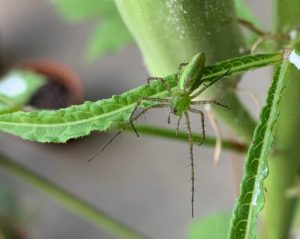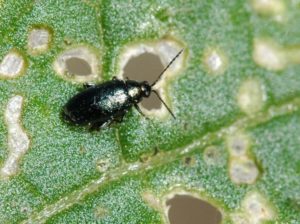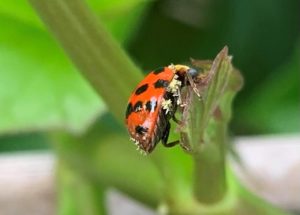Mealybugs are common pests that plague both indoor plants and outdoor gardens. Nymphs and adult mealybugs equally pose a threat because they suck the sap out of plants via their needle-like stylets, causing leaves to turn yellow and drop off. Flower buds and fruit are also at risk. What’s more, mealybugs excrete a sticky residue called honeydew that can promote black sooty mold, which, if left untreated, can prohibit plant photosynthesis and stunt the plant’s growth. The honeydew also attracts ants, which, in turn, protect the mealybugs from predators.
One of the most effective mealybug predators is the aptly named mealybug destroyer. Also known as the mealybug ladybird, this tiny but fierce beetle is in the same family as the ladybug. (Some refer to them as ladybirds, while others call them ladybugs). The mealybug destroyer, which prefers warm climates, was first introduced to the United States from Australia in 1891 to help combat a citrus mealybug infestation in California. These petite beetles have been helping farmers and backyard gardeners ever since.
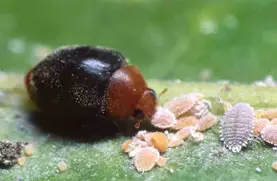
The life cycle of a mealybug destroyer includes three larval instars (stages). After twenty-four days, the larvae will enter a pupal stage and then emerge as adults. The adults live only for a short two months.
The adult mealybug destroyer is much smaller than its iconic cousin, the ladybug, measuring a mere 2 to 4 mm in length. Instead of a bright red elytra with spots, this beetle is dark and void of markings. Its head, antennae, legs, and the posterior of the elytra are rusty-brown.
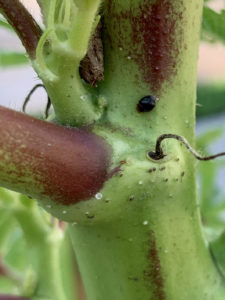
The larvae, which are larger than the adult beetles, measure up to 1/2″ long. They have white, oval, or cigar-shaped bodies that, at first glance, resemble mealybugs. Their similarity can cause problems for gardeners who may inadvertently mistake one for the other, and get rid of a beneficial insect while allowing the harmful one to remain.
How to Tell the Difference
There are a few ways to differentiate between adult mealybugs and mealybug destroyer larvae. The former have segmented bodies that are covered in a white wax that looks like they’ve been given a light dusting of powder or ground meal, hence the name mealybug. They also have a row of stiff filaments located around the perimeter of their bodies. The longtailed mealybug has one to two tails, as the name suggests, that can measure twice the length of their bodies.
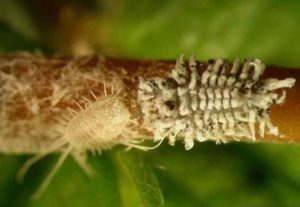
At times, mealybugs may be covered in a white, cottony substance that they produce to protect themselves from the heat. They also use the little fluffs of “cotton” as a nest of sorts for their eggs.
Mealybug destroyer larvae, on the other hand, do not have tails or stiff filaments around their bodies’ perimeter. Instead, they have thicker, uneven, fibrous-looking filaments that cover the back of their bodies and resemble more of a miniature rag mop.
Another way to differentiate between these two species is size. The adult mealybugs measure only about 1/4″ long, while mealybug destroyer larvae are twice that length.
Lastly, you can tell the difference between adult mealybugs and mealybug destroyer larvae because the adult mealybugs move very slowly, if at all, while mealybug destroyer larvae are much more active.
How Mealybug Destroyers Combat Mealybugs
Adult mealybug destroyers will eat mealybugs at every stage of development. They will also consume other soft-bodied insects like aphids and scales. The mealybug destroyer may be a micro-beetle, but, incredibly, it can devour up to 250 mealybugs nymphs!
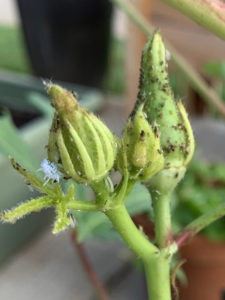
The larval stage of the mealybug destroyer also poses a major threat to mealybugs. The adult female mealybug destroyer will lay up to 400 yellow eggs among mealybug and aphid eggs. After about five days, the mealybug destroyer eggs will hatch, and the larvae will eat the hatching mealybug eggs, aphid eggs, as well as the nymphs and even the honeydew.
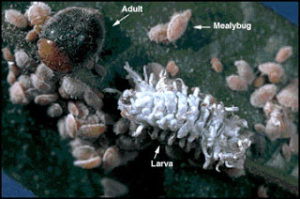
Because mealybug destroyers are so effective, gardeners are often willing to purchase them to help combat mealybug, scale and aphid infestations, especially in greenhouses. But if you look close, you might already have these ferocious little beetles in your garden. And now that you know the difference, you can cheer on the destroyers with confidence.
Note: If you found this article helpful, please share it with someone you think might be interested in it as well. Thank you!

